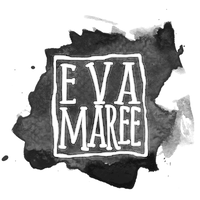About
Eva is an Australian interdisciplinary photographer based in London. Currently, she is in second year at Central Saint Martins in London, studying fine art. Eva has completed a fine art foundation (2018) also at Saint Martins following her moving to the UK from South Africa.
Eva has had video work included in LUX Moving Image, London, in 2019. She has also had work selected for exhibition in the Central Saint Martins Foundation Show in Lethaby Gallery in 2019. She has had photographic work shown in independent online magazine Unblunted in 2019. More recently, Eva was selected as a grant recipient for Grow Wild (an arts based organisation run through Kew Gardens) to create a work for their March 2021 Exhibition in Central London. Eva has also run an online workshop for alternative pinhole photography through University of London's independent student union and been featured in their Winter Markets for 2020.
My practice revolves around the tangible, physicality of a photograph and its relationship to surface. Theoretically, I am questioning, experimenting, collaborating (primarily in culminating and editing responses to questions), curating and narrating; guiding my choice of medium. My creative process typically begins by making a photograph, using traditional analogue means, I work across various film formats with obsolete film cameras and with rudimentary, self-constructed pinhole cameras (pumpkins, suitcases). Additionally, I have a proficient understanding of embroidery, book-binding, camera construction, developing and alternative darkroom methodology (central to my practice). I work prolifically, creating instillation-like compilations of hand-printed photographs and image objects (photographic prints on alternative surfaces), appropriations of handwritten responses in thread and found images mounted on walls or comprised in hand-bound books. Presently, I am looking to expand this to using ‘ready-mades’ as cameras (such as my oven, washing machine, fridge and bin).
My subjectivity is often obsessive, of recent, my last semester focused upon oysters and their historical referencing as an aphrodisiac, and thus etymological relationship to Aphrodite, the goddess of female sexuality and her engenderment in a mollusk; I created small paintings and embroidery with the objective of being interpreted as yonic (of which is not recognised by Microsoft Word). Historically, lesbianism was never even illegal in the United Kingdom or any country within the Commonwealth. All historical references to homosexuality are exclusively ‘sodomy’, additionally, historical lesbian relationships are shrouded with very limited terminology, namely ‘female companionship’; the historical erasure of queer women. This lack of female queer visibility and the degrees of which queerness can be made visible, seem comparative to analogue developing: there is a window in-time when standing over the developing tray, eyes adjusted to red light, in which an image is painted, seemingly from behind, onto an otherwise white surface. This process can only be observed under red light as black and white photo paper is least less sensitive to it. The selective eye of a camera’s lens and my own do not feel dissimilar, thus inspiring my desire to create cameras out of the everyday (the assessable).
